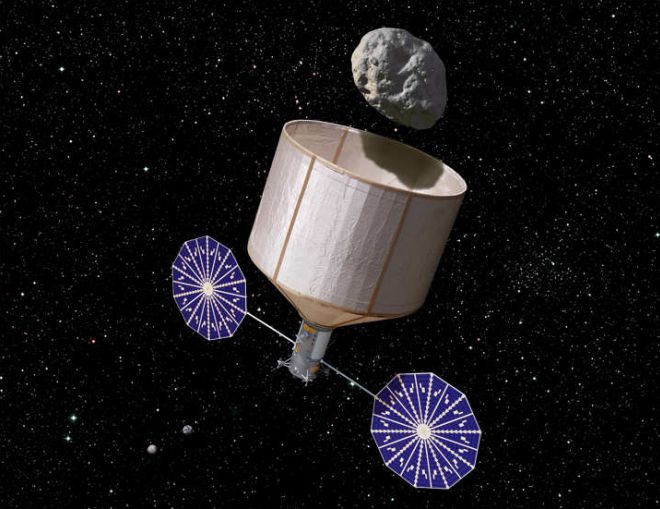
NASA's funding outlook for the next year will be revealed today (April 10), when President Barack Obama releases his 2014 federal budget request.
A boost over the $17.7 billion allocated to the space agency in last year's request would be a surprise in these tough fiscal times. But NASA is expected to receive $100 million to jump-start a bold asteroid-capture mission, which would drag a 500-ton space rock near the moon for research and exploration purposes.
"NASA is in the planning stages of an innovative mission to accomplish the president's challenge of sending humans to visit an asteroid by 2025 in a more cost-effective and potentially quicker time frame than under other scenarios," a senior administration official told SPACE.com.
"This mission would combine the best of NASA's asteroid identification, technology development and human exploration efforts to capture and redirect a small asteroid to just beyond the moon to set up a human mission using existing resources and equipment, including the heavy-lift rocket and deep-space capsule that have been under development for several years," the official added, referring to NASA's Space Launch System (SLS) rocket and Orion spacecraft. [NASA's Asteroid-Capture Plan (Video)]
U.S. Senator Bill Nelson (D-FL) said last week that the proposed mission aims to get astronauts to the captured space rock by 2021, which is also the year that SLS and Orion are scheduled to begin carrying crews.
The overall cost of such a robotic asteroid-retrieval mission — not including any astronaut visits — is estimated at about $2.6 billion, according to a feasibility study led by Caltech's Keck Institute for Space Studies that was published last year.
The 2014 budget request follows closely on the heels of sequestration, which on March 1 imposed a broad 5-percent cut on many federal agencies, including NASA. Sequestration and several other small cuts have reduced the space agency's actual 2013 budget to around $16.6 billion, so NASA is now looking for ways to trim costs.
Sign up for the Live Science daily newsletter now
Get the world’s most fascinating discoveries delivered straight to your inbox.
NASA chief Charles Bolden has said that SLS, the $8.8 billion James Webb Space Telescope and the commercial crew program are top agency priorities, so they may not be affected much by the cuts. NASA's planetary science program, on the other hand, may have to cough up a relativately large share.
Planetary science also suffered in last year's federal budget request, which cut the robotic exploration program by about 20 percent while keeping NASA's overall top line pretty much flat.
Bolden will discuss NASA's 2014 budget during a White House press conference today at 1:30 p.m. EDT (1730 GMT) and a NASA teleconference today at 3 p.m. EDT (1900 GMT).
You can follow the NASA 2014 budget briefings live on SPACE.com, courtesy of the White House Office of Science and Technology Policy and NASA TV.
This story was provided by SPACE.com, sister site to Live Science. Follow Mike Wall on Twitter @michaeldwall. Follow us @Spacedotcom, Facebook or Google+. Originally published on SPACE.com.













